Evidences of Plate Movement
1/41
There's no tags or description
Looks like no tags are added yet.
Name | Mastery | Learn | Test | Matching | Spaced |
|---|
No study sessions yet.
42 Terms
meaning of Pangea
greek for all lands or all earth
pangea is
a supercontinent that dates back 250 million years ago
A plate might include
a continent, parts of a continent, and seafloor
theory in science is
a statement backed by evidences of several tests
hypothesis in science is
statements made without any evidence before an experiment
the ocean that surrounds pangea
the panthalassa
Pangea was mostly in which hemisphere
the southern hemisphere
as of current, which hemisphere are the continents mostly located in
the northern hemisphere
what are the 7 continents of the world
asia, south america, north america, europe, africa, australia, antarctica
who is Alfred Lothar Wegener
he is a german climatologist and arctic explorer who hypothesized in the 1900s that the continents were once connected and that it moves on the earth’s surface
what is the title of alfred lothar wegener’s book
Origins of the Continents and Oceans, published 1915
permian period
last period of the paleozoic era, period of mass extinction before dinosaur extinction, & continents were still pangea (225 million yrs ago)
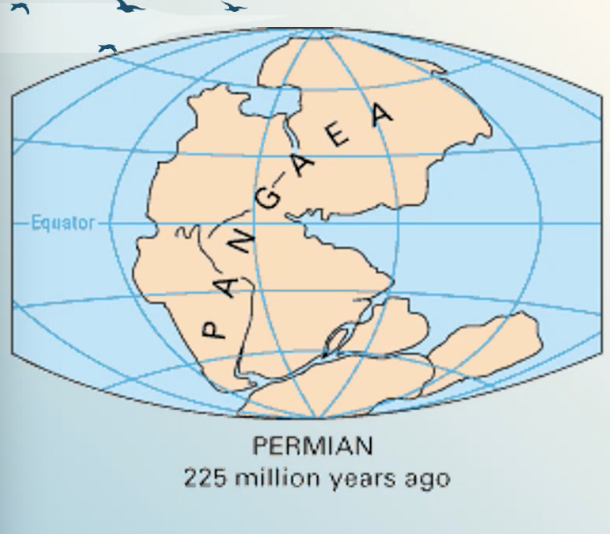
triassic period
the continents started to drift apart into two, laurasia and gondwana. (200 million years ago)

jurassic period
emerging of new life and dinosaurs. laurasia started to drift northwards and rotate causing a new rift that separated the continents into eurasia and north america, it also formed the north atlantic ocean. gondwana also broke into land continents. (135 million years ago)
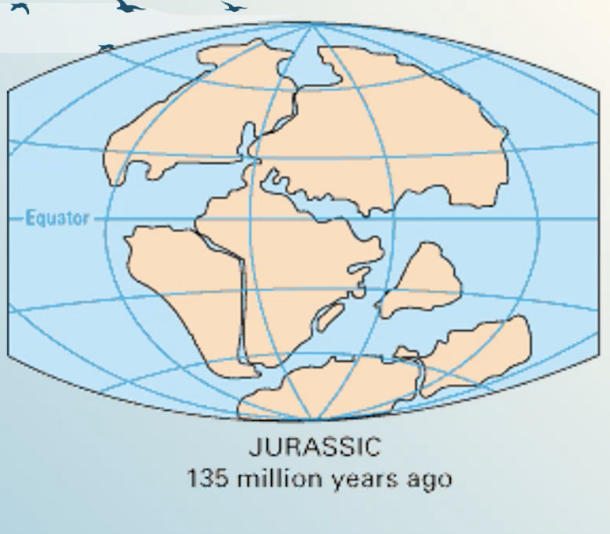
cretaceous period
100 million years ago a rift between africa and south america formed the south atlantic ocean. india, australia, and antarctica also began to separate. india broke away from australia & antarctica and moved towards eurasia.
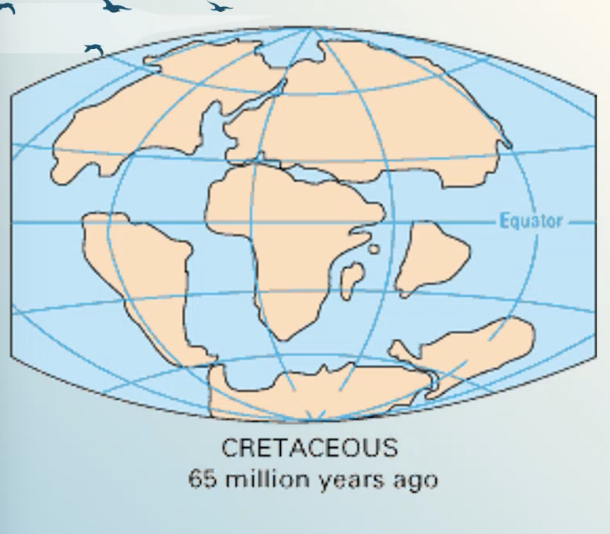
present day period
india collided with eurasia and formed the himalaya mountains. slowly the continents moved into their actual positions. the collisions turn new crust into continents and uplift the land (mountain ranges).
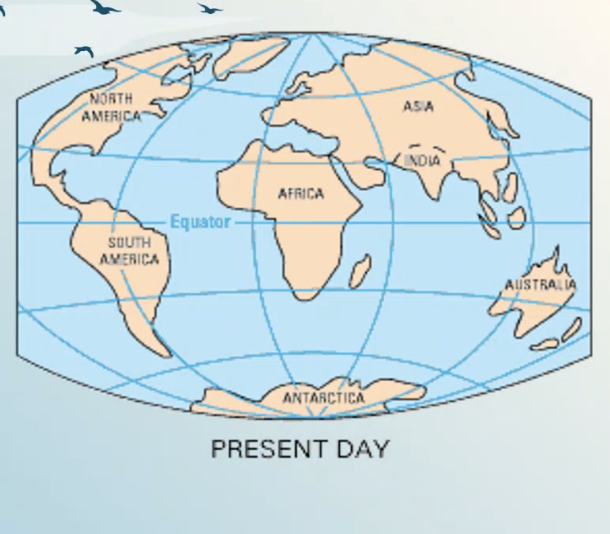
geological fit evidence
continental jigsaw puzzle, matching of geological features on different continents
fossils are
preserved remains of plants and animals
fossil evidences
fossils of the same species are found on continents on different sides of the atlantic ocean. eg. matching reptile fossils in south america and africa
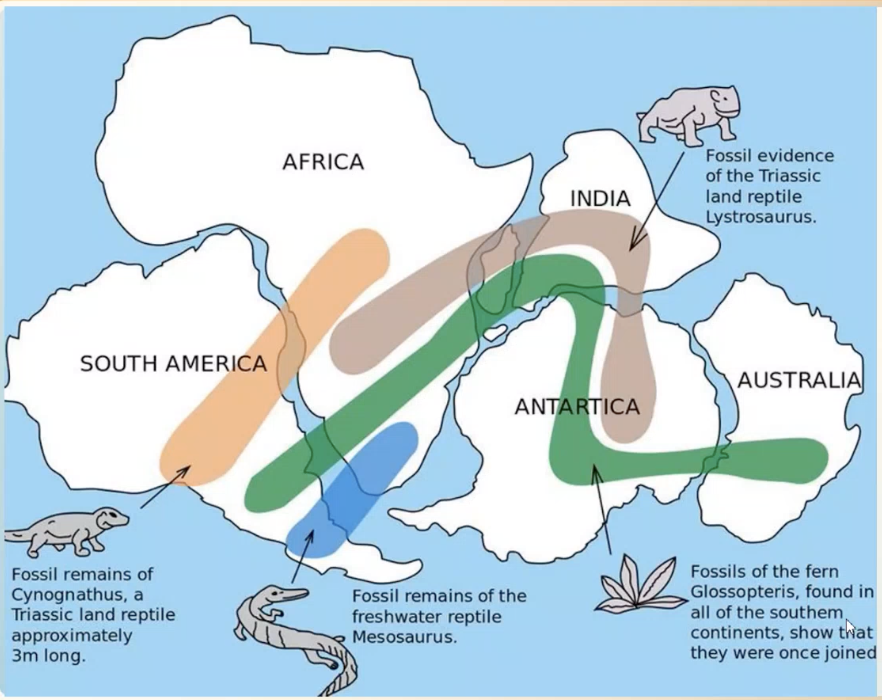
glossopteris was a plant fossil found in which 5 countries.
australia, antarctica, india, south africa, and south america
rock evidences
matching rock features on different continents, eg. appalachian mountains and scottish highlands + glaciers, which carve rocks as they move = determines the direction of continent movement
glaciers were found in
warm continents that weren’t plausible to attain such features
climate evidences
coal deposits were found in antarctica, which should be impossible considering it’s current location. the same were found in south america, africa, and southeast asia
what does the sonar do?
it bounces soundwaves off the seafloor to determine depth and features.
who proposed the seafloor spreading theory
Harry Hammond Hess
what is seafloor spreading
a process where tectonic plates split apart from eachother
seafloor spreading theory states
that magma from below the earth’s crust rises to the surface at the mid ocean ridge, pushes the seafloor away, and then the magma cools and becomes the new seafloor. it also creates new bodies of water
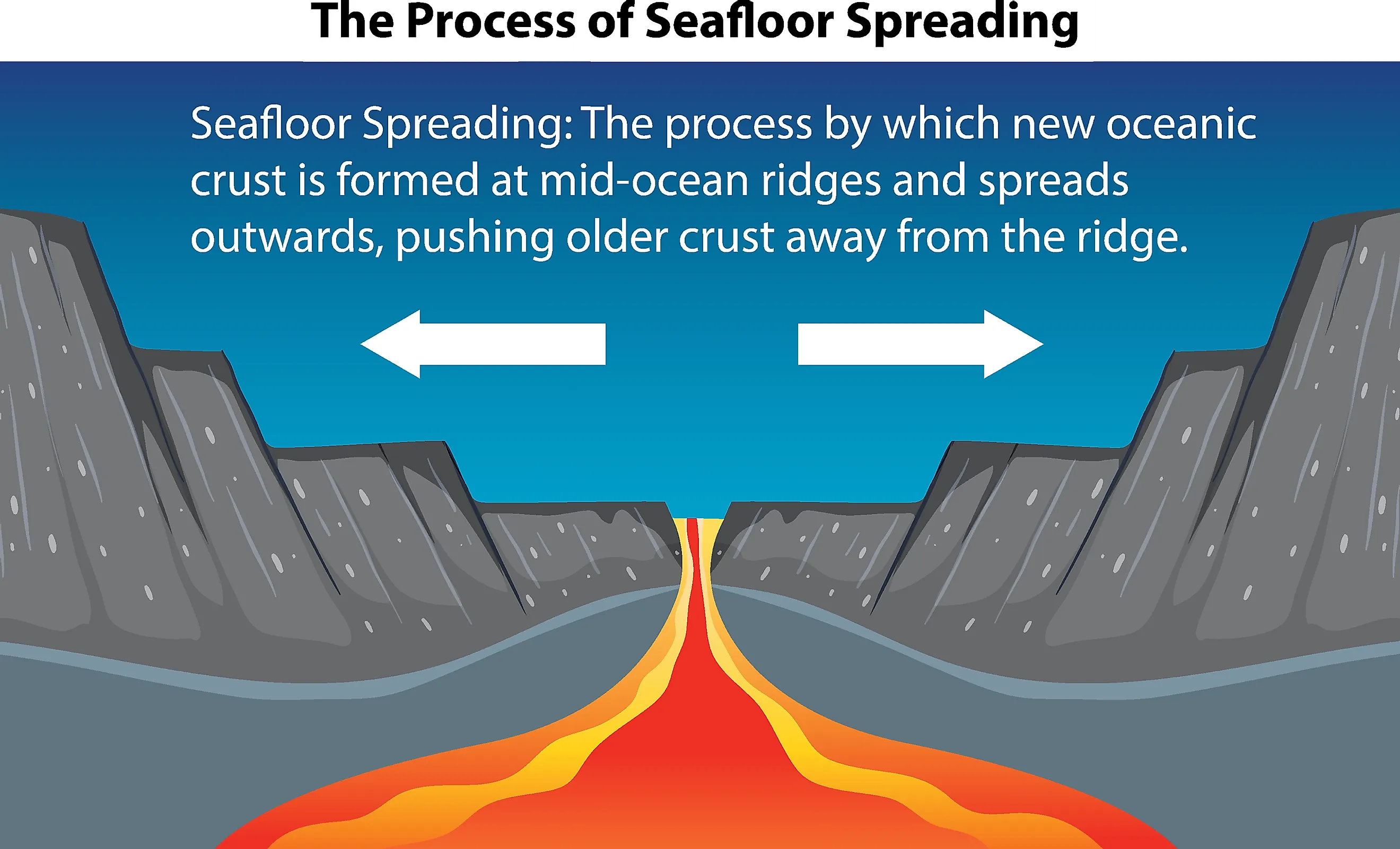
how is the age of the seafloor determined
closest to the ridge is youngest, while further is the oldest
the east pacific rise is
the most active site of seafloor spreading. it is beside north america and south america. spreads 14cm of seafloor every year
rates of seafloor formation and subduction
sometimes creation is faster than subduction, or interchangeably and vice versa
subduction zone is in
ocean trenches, and it is formed by one tectonic plate going under another. (oceanic + continental plate)
what gets destroyed in the subduction zone
old seafloor that is farthest from the ridge.
types of sediments found on seafloor
thinner sediments near the ridge, or younger crust. & thicker sediments on older crust
magnetic reversal
is when the north and south magnetic poles switch
the magnetic field
is created by the movement of the iron and nickel in the outer core, when the flow becomes unstable the places of north and south flips
the magnetic field’s direction is determined by
the crystalized irons in rocks found in the seafloor
hotspot volcanoes are created on
oceanic plates because they are thinner
hotspot
A hot spot is where most volcanoes are created from melting hot rocks in the mantle that build up to the ocean's surface and form an island.
deep-focus earthquakes mostly occur
near ocean trenches, where one plate sinks under another
shallow earthquakes
happen near the surface as a plate starts sinking
deep-focus earthquakes
happen deeper in the Earth as the plate moves farther down